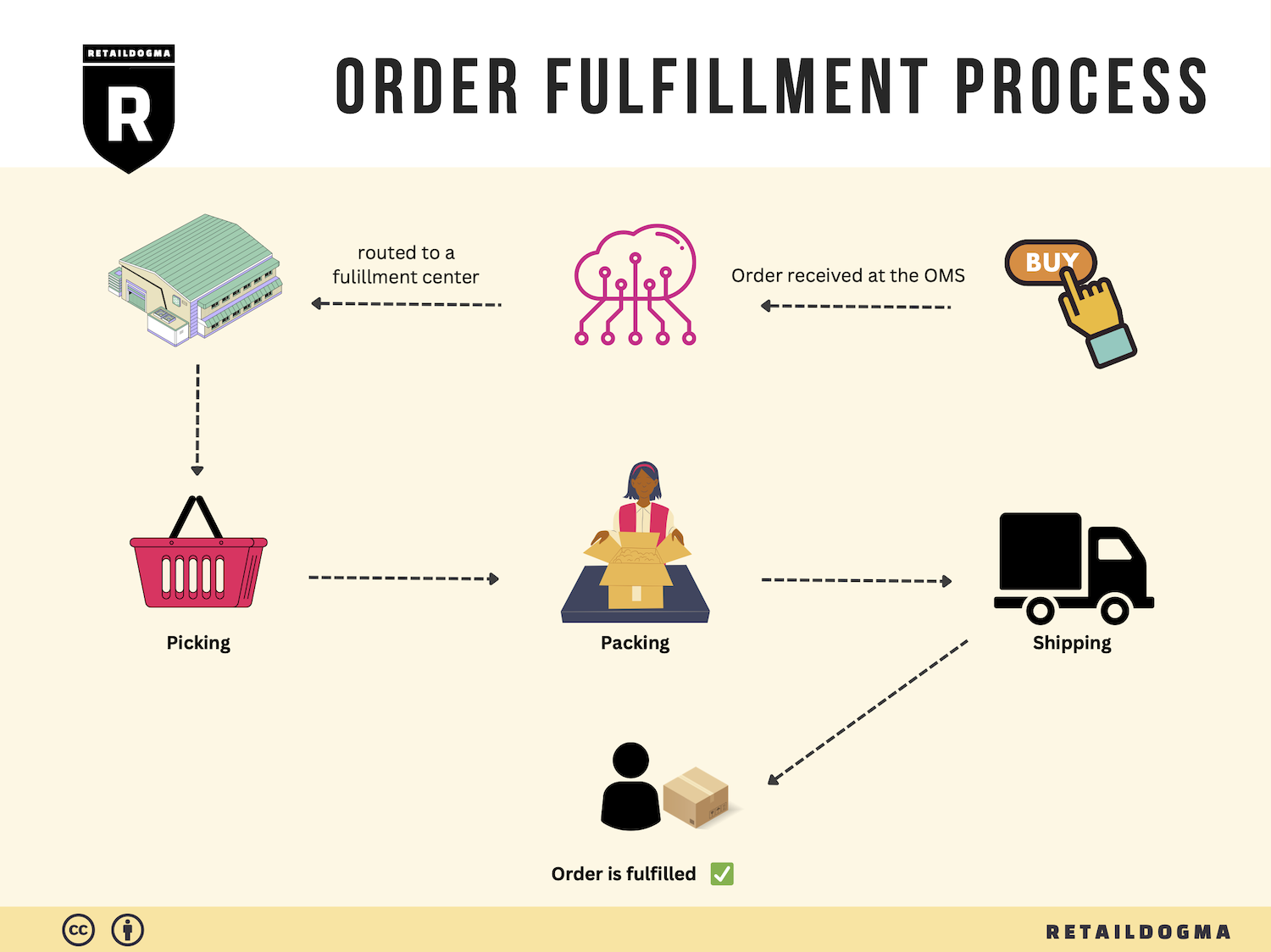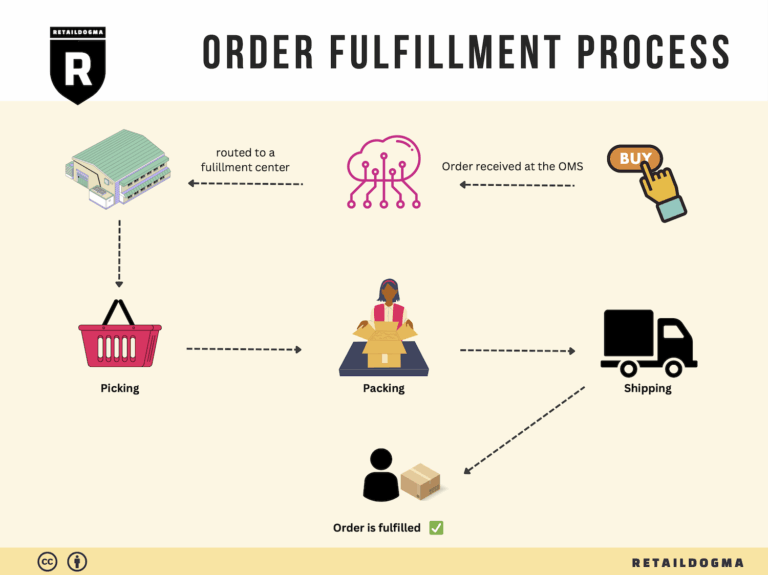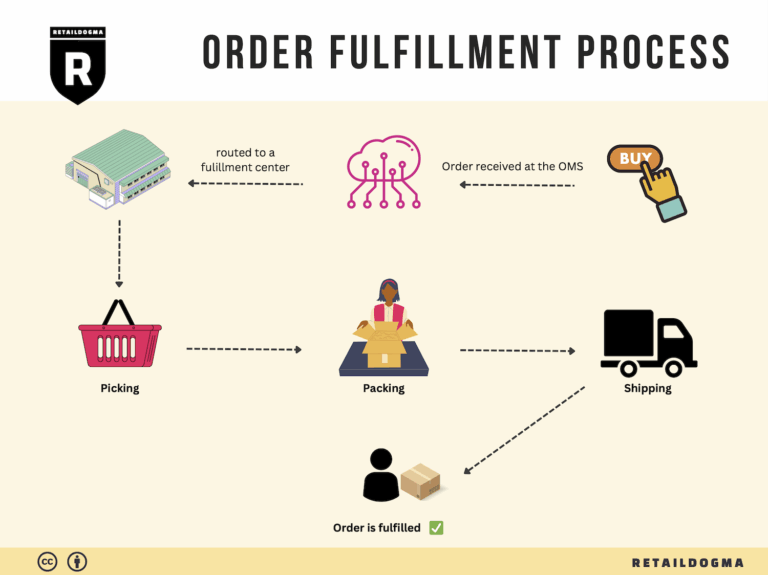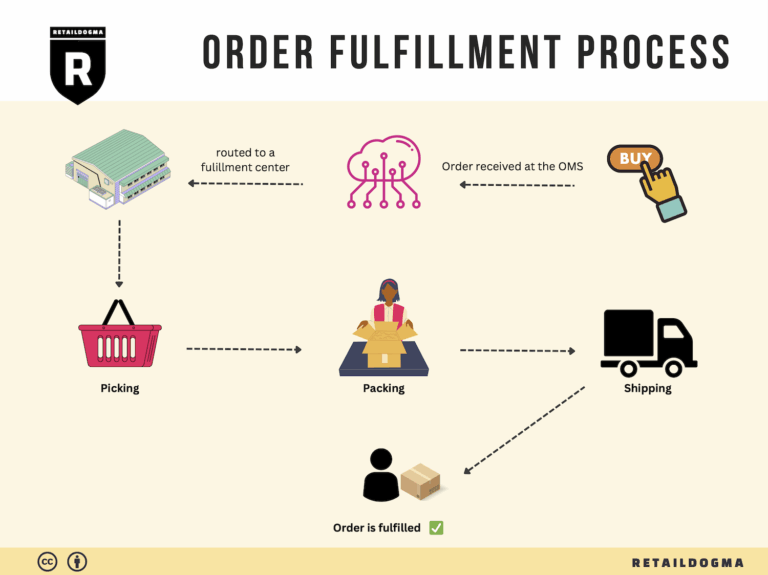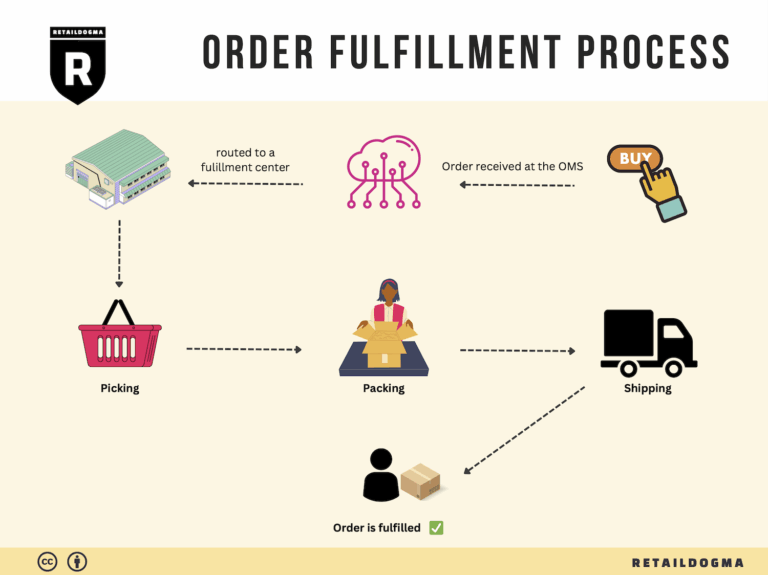Ecommerce Fulfillment Services: The Ultimate Guide (2025)
What is E-commerce Fulfillment? An Introduction for Growing Businesses
E-commerce businesses often face a common hurdle: the overwhelming task of packing and shipping orders efficiently while trying to scale their operations. As sales increase, the logistics of order fulfillment can become a significant drain on resources, time, and energy. For many, what initially seemed like a manageable task quickly transforms into a chaotic process filled with late shipments, inventory mismanagement, and customer dissatisfaction.
Understanding E-commerce Fulfillment
At its core, fulfillment is the process of getting a product from your warehouse to your customer’s doorstep. This involves various stages, including receiving inventory, storing products, processing orders, packing, and shipping. A well-structured fulfillment strategy is essential for maintaining customer satisfaction and fostering repeat business, especially in a competitive landscape like e-commerce.
What This Guide Covers
In this guide, we will explore various fulfillment models that can help you streamline your operations. You’ll learn about:
-
Third-Party Logistics (3PL): This model involves outsourcing your fulfillment process to a specialized logistics provider. 3PLs can handle everything from storage to shipping, allowing you to focus on growing your business.
-
Fulfillment by Amazon (FBA): A popular option for many online sellers, FBA allows you to leverage Amazon’s vast distribution network. With FBA, you send your products to Amazon’s fulfillment centers, and they take care of storage, packaging, and shipping on your behalf.
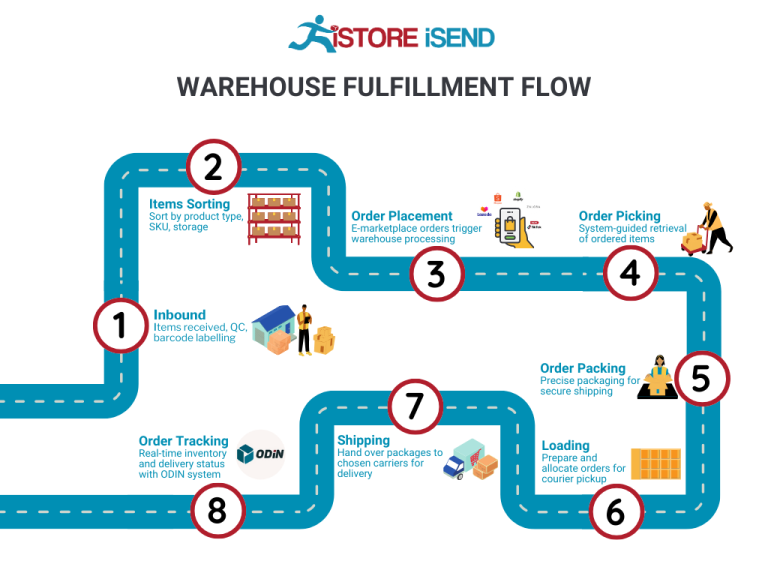
Core Services of Fulfillment
We will delve into the core services that fulfillment centers typically offer, such as inventory management, order processing, packing, and shipping. Understanding these services will help you identify what you need from a fulfillment partner and how they can add value to your business.
Choosing the Right Fulfillment Partner
Selecting the right fulfillment partner is crucial for your business’s success. We will discuss key factors to consider, including location, scalability, technology integration, and customer service. These elements will help you make an informed choice that aligns with your operational needs and growth ambitions.
Pricing Considerations
Lastly, pricing models can vary significantly between different fulfillment providers. We will break down the typical costs associated with fulfillment services, helping you to budget effectively and understand the potential return on investment.
Empowering Your Logistics Decisions
The goal of this guide is to empower you, the business owner, to make informed decisions about your logistics strategy. With the right fulfillment approach, you can enhance your operational efficiency, improve customer satisfaction, and ultimately scale your e-commerce business effectively.
What You’ll Learn In This Guide
- What is E-commerce Fulfillment? An Introduction for Growing Businesses
- The Order Fulfillment Process: From ‘Buy’ Button to Customer’s Door
- Comparing Fulfillment Models: In-House vs. 3PL vs. Dropshipping
- A Deep Dive into Amazon FBA: Pros, Cons, and Who It’s For
- Core Services Offered by Fulfillment Centers
- How to Choose a Fulfillment Partner: A 6-Point Checklist
- Understanding Fulfillment Pricing: A Breakdown of Common Fees
- Frequently Asked Questions (FAQs) about Fulfillment
- Conclusion: Is Outsourcing Fulfillment the Right Move for Your Business?
- Important Disclaimer
The Order Fulfillment Process: From ‘Buy’ Button to Customer’s Door
1. Receiving Inventory
The order fulfillment process begins with receiving inventory. When products arrive at a fulfillment center, they undergo a thorough inspection to ensure they meet quality standards and match the ordered quantities. Each item is scanned and assigned a Stock Keeping Unit (SKU), which is a unique identifier used to track the product throughout the fulfillment process.
This step is crucial because accurate inventory reception prevents stock discrepancies and ensures that the inventory counts are up-to-date. Any discrepancies can lead to stockouts or overstock situations, which can significantly impact sales and customer satisfaction. By implementing efficient receiving practices, businesses can streamline their inventory management, allowing for quicker response times to customer orders.
2. Warehouse Storage
Once the inventory has been received and processed, it is stored in the warehouse. The KRB9 facility, for example, boasts 13 million square feet of storage racking, which utilizes very narrow aisles to maximize space. Products are organized systematically, often using a bin or shelf system based on their SKU.
Effective warehouse storage is essential as it impacts the subsequent steps in the fulfillment process. Proper organization reduces the time spent searching for products, thus enhancing the overall efficiency of order fulfillment. Additionally, well-structured storage helps in maintaining optimal inventory levels, ensuring that high-demand products are readily accessible. This strategic placement can also reduce handling costs and improve order accuracy.
3. Order Picking
Order picking is the process of retrieving items from storage to fulfill customer orders. This step typically involves the use of pick lists, which are generated based on customer orders and outline the specific products and quantities needed. In high-volume fulfillment centers like KRB9, advanced technologies such as automated picking systems or robotics may be employed to enhance speed and accuracy.
The importance of order picking cannot be overstated, as it directly influences customer satisfaction. Accurate and timely picking ensures that customers receive the correct products in a timely manner. Errors during this step can lead to returns, increased operational costs, and diminished customer trust. Implementing efficient picking methods, such as batch picking or zone picking, can significantly improve productivity and reduce errors.
4. Order Packing
After items have been picked, they move to the packing stage, where they are prepared for shipment. This involves packaging the products securely to prevent damage during transit and ensuring that all necessary documentation, such as packing slips and shipping labels, are included. Efficient packing processes often utilize packing stations equipped with tools like automated scales and label printers to streamline operations.
Packing is a critical step because it protects the product and ensures compliance with shipping regulations. Properly packed orders reduce the risk of damage and enhance the customer experience by delivering products in pristine condition. Furthermore, efficient packing processes can optimize shipping costs by minimizing dimensional weight and ensuring that packages are appropriately sized for their contents.
5. Shipping & Delivery
The final step in the order fulfillment process is shipping and delivery. Once the orders are packed, they are scheduled for shipment through various carriers, depending on the delivery speed required and the destination. In the case of KRB9, products are distributed not only to local fulfillment centers but also to those in Southern California, showcasing a robust logistics network.
This step is vital as it marks the transition from the fulfillment center to the customer’s doorstep. Timely shipping and reliable delivery directly impact customer satisfaction and retention. Businesses can enhance their shipping processes by offering various shipping options, including same-day or next-day delivery, and by providing tracking information that keeps customers informed of their order status. Efficient shipping practices can lead to increased customer loyalty and repeat business, ultimately contributing to the overall success of the e-commerce operation.
In conclusion, understanding and optimizing each step of the order fulfillment process—from receiving inventory to shipping and delivery—is essential for e-commerce businesses looking to scale their operations and enhance customer satisfaction. Implementing best practices at each stage can lead to significant improvements in efficiency, accuracy, and overall performance.
Comparing Fulfillment Models: In-House vs. 3PL vs. Dropshipping
| Model | Who Handles Inventory | Best For (Business Stage) | Key Advantage | Key Disadvantage |
|---|---|---|---|---|
| In-House Fulfillment | Your business | Established businesses | Full control over inventory and operations | High overhead costs and resource-intensive |
| Third-Party Logistics (3PL) | Third-party providers | Growing businesses | Scalability and expertise in logistics | Less control over inventory and potential delays |
| Dropshipping | Suppliers | Startups and small businesses | Low initial investment and minimal risk | Low margins and reliance on supplier reliability |
In-House Fulfillment
In-house fulfillment involves managing the entire logistics process within your own facilities. This model is typically favored by established businesses that have the capital and resources to handle inventory, packing, and shipping independently. The primary advantage of in-house fulfillment is the complete control it offers over inventory levels, product quality, and the fulfillment process itself. Businesses can implement tailored processes that suit their specific needs, leading to potentially better customer service and faster response times. However, this model can also lead to significant overhead costs, including labor, warehousing, and technology investments. Moreover, as order volumes fluctuate, managing space and staffing can become increasingly challenging, particularly during peak seasons. Therefore, while in-house fulfillment can provide a robust framework for established businesses, it requires careful planning and resource allocation.
Third-Party Logistics (3PL)
Third-party logistics (3PL) involves outsourcing the logistics and fulfillment process to specialized providers. This model is ideal for growing businesses that may not have the infrastructure or expertise to manage logistics effectively. By leveraging a 3PL, companies can benefit from the provider’s established systems, technology, and industry knowledge. This can lead to increased efficiency, scalability, and the ability to focus on core business activities such as marketing and product development. Additionally, 3PLs often have access to advanced technology that can optimize shipping routes and inventory management. However, one of the key disadvantages of 3PL is the reduced control over inventory and fulfillment processes, which can result in delays and miscommunication. Companies must also be cautious when selecting a 3PL partner, as poor performance can directly impact customer satisfaction and brand reputation.
Dropshipping
Dropshipping is a fulfillment model where retailers sell products without holding any inventory. Instead, when a retailer receives an order, they purchase the item from a third-party supplier who ships it directly to the customer. This model is particularly appealing for startups and small businesses due to its low barrier to entry. Entrepreneurs can create an online store without the need for upfront inventory costs, making it an attractive option for those testing new markets or product lines. The key advantage of dropshipping is the minimal financial risk involved, as businesses only pay for products after they have been sold. However, dropshipping comes with its challenges, such as lower profit margins and dependence on suppliers for product quality and shipping times. Retailers must also navigate potential inventory issues, as stock levels may fluctuate with suppliers, leading to potential stockouts or delays in fulfillment. As such, while dropshipping can be a convenient option for new businesses, it requires careful management of supplier relationships to maintain a positive customer experience.
In conclusion, choosing the right fulfillment model is critical for the success and scalability of an e-commerce business. Each model presents unique advantages and challenges that must be weighed against the company’s current stage, resources, and strategic goals. Business owners should conduct a thorough analysis of their operational needs, customer expectations, and financial capabilities before deciding which fulfillment strategy aligns best with their overall business objectives.
A Deep Dive into Amazon FBA: Pros, Cons, and Who It’s For
Understanding Fulfillment by Amazon (FBA)
Fulfillment by Amazon (FBA) is a service that allows e-commerce sellers to store their products in Amazon’s extensive fulfillment centers. Amazon takes care of storage, packaging, shipping, and customer service for these products. This enables sellers to focus on other aspects of their business while leveraging Amazon’s vast logistics network and customer reach.
How FBA Works
-
Product Listing: Sellers create product listings on the Amazon marketplace, specifying that they want to use FBA.
-
Shipping to Amazon: Sellers send their inventory to Amazon’s fulfillment centers. They can choose from various shipping options and methods to get their products to the designated warehouse.
-
Storage: Once received, products are stored in Amazon’s warehouses. Sellers can monitor their inventory levels through the Amazon Seller Central dashboard.
-
Order Processing: When a customer places an order for a product fulfilled by Amazon, the company handles the picking, packing, and shipping of the item directly to the customer.
-
Customer Service: Amazon also manages customer service inquiries and returns for FBA products, providing a seamless experience for buyers.
-
Payment: Sellers receive payments for their sales through Amazon, minus any applicable fees.
Pros of Using FBA
Prime Eligibility
One of the most significant advantages of using FBA is access to Amazon Prime customers. Products fulfilled by Amazon automatically qualify for Prime shipping, which can significantly enhance visibility and appeal. Prime members are more likely to purchase items with the Prime badge due to the promise of fast, free shipping.
Customer Trust
Leveraging Amazon’s established brand and reputation can enhance customer trust. Shoppers are more likely to buy from sellers using FBA because they know Amazon guarantees the quality of service, including fast shipping and efficient customer support. This trust can lead to higher conversion rates and repeat purchases.
Multi-Channel Fulfillment
FBA is not limited to sales on Amazon alone. Sellers can also use FBA to fulfill orders from other platforms, such as eBay or their own websites. This multi-channel fulfillment capability allows sellers to streamline their operations and manage inventory more efficiently across various sales channels.
Scalability
FBA can accommodate business growth. As orders increase, sellers can rely on Amazon’s logistics to handle the surge without needing to invest in additional warehousing or shipping infrastructure. This scalability is particularly beneficial during peak seasons or promotional events.
Time Savings
By outsourcing fulfillment to Amazon, sellers can save considerable time on packing, shipping, and customer service. This allows them to focus on product development, marketing, and other core business activities that drive sales.
Cons of Using FBA
High Fees
While FBA offers numerous advantages, it comes with costs that can erode profit margins. Sellers must pay storage fees based on the volume of inventory stored in Amazon’s warehouses, as well as fulfillment fees for each order processed. During peak seasons, these fees can increase, impacting overall profitability.
Strict Inventory Rules
Amazon has strict guidelines regarding inventory management, including requirements for labeling and packaging. Non-compliance can lead to additional charges or penalties, and in some cases, the refusal of inventory. This can create operational challenges for sellers who may not have the resources to manage these complexities.
Commingling Risks
When using FBA, sellers’ products may be commingled with those of other sellers. This means that if a customer returns a defective item, it could be mixed with the seller’s inventory, potentially leading to negative customer experiences. Some sellers prefer to avoid this risk by opting for stickered inventory, which allows them to maintain control over their products.
Limited Control Over Fulfillment
Sellers relinquish control over the fulfillment process when using FBA. This can be concerning for businesses that want to ensure a specific level of service or branding in their packaging and shipping. Additionally, relying on Amazon’s logistics means that sellers are subject to any operational issues Amazon may face.
Inventory Management Challenges
Effective inventory management becomes crucial when using FBA. Sellers must keep track of their stock levels to avoid incurring long-term storage fees or running out of stock, which could lead to lost sales. Managing inventory across multiple fulfillment channels can be complex and requires careful planning.
Who is FBA Best For?
FBA is particularly beneficial for:
-
Small to Medium-Sized Businesses: Sellers who may not have the resources to manage their own fulfillment operations can leverage Amazon’s infrastructure to scale without significant upfront investment.
-
E-commerce Entrepreneurs: Those looking to enter the e-commerce space can quickly establish a presence on Amazon without needing to develop their logistics capabilities.
-
Sellers with High Turnover: Businesses with a consistent sales volume or those during peak seasons (e.g., holidays) can benefit from the efficiency and speed of FBA.
-
Multi-Channel Sellers: Companies that sell on multiple platforms can streamline their operations and focus on growth while Amazon handles fulfillment.
-
Brands Seeking Prime Access: Sellers who want to tap into the lucrative Prime customer base will find FBA essential for maximizing visibility and sales potential.
In conclusion, while FBA offers significant advantages for scaling e-commerce operations, sellers must weigh these benefits against the potential downsides. Understanding the intricacies of FBA will enable businesses to make informed decisions that align with their growth strategies.
Core Services Offered by Fulfillment Centers
Inventory Management & Warehousing
Inventory management is a crucial service provided by fulfillment centers, encompassing the systematic tracking and control of stock levels. Fulfillment centers utilize sophisticated inventory management systems that integrate with e-commerce platforms, allowing businesses to monitor their stock in real-time. This service includes not only the storage of products but also the organization of inventory in a way that maximizes space and efficiency.
Benefits for E-commerce Businesses:
1. Real-Time Visibility: E-commerce businesses gain access to real-time data on inventory levels, which is vital for making informed purchasing decisions and avoiding stockouts or overstock situations.
2. Space Optimization: With advanced warehousing solutions, fulfillment centers can utilize space efficiently through techniques like vertical storage and narrow aisles, allowing businesses to store more products without incurring additional costs.
3. Scalability: As your business grows, fulfillment centers can easily accommodate increasing inventory needs without the burden of investing in additional warehouse space or management systems.
Pick and Pack Services
Pick and pack services are integral to the order fulfillment process. This involves selecting the ordered items from inventory (picking) and preparing them for shipment (packing). Fulfillment centers employ a combination of human labor and automation, such as robotics and conveyor systems, to streamline this process.
Benefits for E-commerce Businesses:
1. Speed and Efficiency: Automated systems in fulfillment centers can significantly reduce the time taken to pick and pack orders, enabling quicker delivery times. This is essential for meeting customer expectations in today’s fast-paced e-commerce landscape.
2. Accuracy: Fulfillment centers implement rigorous quality control measures to minimize errors in order fulfillment. This reduces the likelihood of returns due to incorrect items being shipped, enhancing customer satisfaction.
3. Cost-Effectiveness: By outsourcing pick and pack services, e-commerce businesses can save on labor costs and overhead associated with managing an in-house fulfillment team, allowing them to focus resources on core business functions like marketing and product development.
Kitting and Assembly
Kitting and assembly services involve grouping multiple products into a single package or preparing items for sale by assembling them. This service is particularly beneficial for businesses that offer bundled products or require assembly before shipping.
Benefits for E-commerce Businesses:
1. Customization: Fulfillment centers can create customized kits or product bundles based on specific customer needs or seasonal promotions, providing a unique selling proposition that can drive sales.
2. Time Savings: By outsourcing kitting and assembly, businesses can save time and reduce operational complexities associated with managing these processes in-house. This allows teams to focus on scaling the business rather than logistical challenges.
3. Enhanced Customer Experience: Offering pre-assembled products or kits can improve customer experience by providing convenience and reducing the effort needed for customers to purchase multiple items.
Returns Management (Reverse Logistics)
Returns management, or reverse logistics, is a critical service offered by fulfillment centers, especially in the e-commerce sector where return rates can be significant. This service involves the handling of returned goods, including processing, restocking, and managing the logistics of returned items.
Benefits for E-commerce Businesses:
1. Streamlined Processes: Fulfillment centers have established processes for handling returns, which can minimize the time and effort required for e-commerce businesses to manage this complex aspect of their operations.
2. Cost Reduction: Efficient returns management can help businesses reduce costs associated with reverse logistics. By optimizing the process, fulfillment centers can minimize the impact of returns on overall profitability.
3. Customer Retention: A smooth and hassle-free returns process enhances customer satisfaction, which is vital for retaining customers in a competitive e-commerce environment. Fulfillment centers often provide easy return shipping options and quick turnaround times for processing returns, which can lead to repeat business.
In conclusion, leveraging the core services offered by fulfillment centers such as inventory management, pick and pack services, kitting and assembly, and returns management can significantly enhance the operational efficiency of e-commerce businesses. By outsourcing these functions, businesses can focus on scaling their operations while ensuring that their logistics are handled with expertise and precision.
How to Choose a Fulfillment Partner: A 6-Point Checklist
Location & Warehouse Network
The geographical location of your fulfillment partner can significantly impact shipping times, costs, and overall customer satisfaction. A partner with a well-distributed warehouse network can ensure quicker delivery to your customers, which is critical in today’s fast-paced e-commerce environment.
Questions to Ask:
– What is the location of your warehouses, and how do they align with my target markets?
– How many warehouses do you operate, and how are they distributed geographically?
– What is your average shipping time to major regions where I have customers?
– Do you have plans for future expansion in key markets?
Technology & Integrations
In an era where technology drives efficiency, having a fulfillment partner with robust technology and seamless integrations is crucial. This ensures that your inventory management, order processing, and tracking systems are synchronized, leading to fewer errors and enhanced visibility throughout the supply chain.
Questions to Ask:
– What warehouse management system (WMS) do you use, and how does it integrate with my e-commerce platform?
– Can you provide real-time tracking for orders, and how is this information communicated to my customers?
– Do you support API integrations for easy data exchange?
– How often do you update your technology, and what innovations have you recently implemented?
Specializations (e.g., Cold Storage, Oversized Items)
Different products require different handling. If you deal with specialized items, such as perishable goods or oversized products, it’s essential to ensure that your fulfillment partner has the necessary facilities and expertise to manage these items effectively.
Questions to Ask:
– Do you have specialized facilities for handling my product type (e.g., cold storage, hazardous materials)?
– What is your process for managing inventory that requires specific conditions (temperature, humidity, etc.)?
– Can you accommodate oversized items, and what are the associated costs?
– Have you handled similar products in the past, and can you provide references?
Scalability & Capacity
As your business grows, your fulfillment needs will likely change. Choosing a partner that can scale with you is vital to avoid disruptions in service and ensure that you can meet increasing demand without a hitch.
Questions to Ask:
– What is your current capacity, and how quickly can you scale up during peak seasons?
– Do you have a plan in place for managing unexpected spikes in demand?
– How do you handle seasonal fluctuations in business?
– Can you provide a case study of a client who scaled successfully with your support?
Pricing and Contracts
Understanding the pricing structure and contract terms is crucial for budgeting and avoiding hidden fees. A transparent pricing model can help you forecast expenses and assess whether the partnership will be financially viable as you scale.
Questions to Ask:
– Can you provide a detailed breakdown of your pricing structure (e.g., storage fees, pick and pack fees, shipping costs)?
– Are there any hidden fees or additional costs I should be aware of?
– What are the terms of the contract, and how flexible are they if my needs change?
– Do you offer discounts for long-term contracts or high volume?
Customer Support & Reviews
Reliable customer support can make or break your relationship with a fulfillment partner. You need to ensure that they can address issues promptly and effectively. Additionally, seeking out reviews and testimonials can provide insight into their reliability and service quality.
Questions to Ask:
– What level of customer support do you provide (e.g., dedicated account manager, 24/7 support)?
– How do you handle issues or complaints from clients?
– Can you provide references or case studies from current or previous clients?
– What is your average response time for customer inquiries?
Conclusion
Choosing the right fulfillment partner is a critical decision for any e-commerce business. By following this checklist and asking the right questions, you can ensure that your partner aligns with your business goals, meets your operational needs, and supports your growth. Take the time to evaluate potential partners thoroughly to foster a successful long-term relationship that enhances your fulfillment capabilities and customer satisfaction.
Understanding Fulfillment Pricing: A Breakdown of Common Fees
Initial Setup Fees
Initial setup fees are the charges incurred when you first begin using a fulfillment service. These fees can vary widely depending on the provider and the complexity of your inventory. Typically, initial setup fees cover the onboarding process, which may include integrating your e-commerce platform with the fulfillment center’s systems, configuring inventory management software, and training your team on how to use the new processes.
To calculate these fees, providers often consider factors such as the size of your catalog, the number of different SKUs (stock keeping units) you have, and any customizations required for your specific business needs. Expect to pay anywhere from a few hundred to several thousand dollars, depending on your operation’s scale and requirements.
Receiving Fees
Receiving fees are applied when your inventory arrives at the fulfillment center. These fees cover the cost of unloading, inspecting, and entering your products into the warehouse management system. Receiving fees can vary based on the number of units, the complexity of the items (e.g., bulk items versus small, fragile products), and the efficiency of the receiving process.
Calculating receiving fees typically involves a per-unit charge or a flat fee per shipment, depending on the fulfillment center’s policies. Some providers may charge additional fees for special handling or for receiving items outside of standard business hours.
Storage Fees (per pallet/bin)
Storage fees are charged for the space your products occupy in the fulfillment center. This fee is usually calculated on a monthly basis and can be based on the number of pallets or bins your inventory takes up. The rates can vary depending on factors such as the location of the warehouse, the type of products stored (e.g., seasonal items may incur higher fees), and the overall demand for storage space.
To estimate your storage fees, consider the size and weight of your products and how many pallets or bins they will occupy. Some fulfillment centers offer tiered pricing structures, where the rate per pallet decreases as you store more inventory, incentivizing businesses to keep larger quantities on hand.
Pick & Pack Fees (per item/order)
Pick and pack fees are charged for the labor involved in selecting items from the warehouse and preparing them for shipment. This process includes picking items from shelves, packing them into boxes, and preparing shipping labels. The fees can vary based on the complexity of the order, the number of items being picked, and any special packing requirements (like gift wrapping or adding promotional materials).
Typically, pick and pack fees are calculated on a per-item or per-order basis. Some fulfillment centers may also have minimum charges for small orders, so it’s essential to understand how these fees are structured to avoid unexpected costs.
Shipping Fees
Shipping fees are the costs associated with sending your products to customers. These fees can vary greatly depending on the destination, package weight and dimensions, and the shipping method selected (standard, expedited, etc.). Fulfillment centers often negotiate rates with shipping carriers and may pass on these savings to you, but it’s essential to understand how the charges are calculated.
Shipping fees are usually determined based on the following factors:
– Weight and Size: Heavier and larger packages typically incur higher fees.
– Destination: Shipping costs can vary significantly based on the distance from the fulfillment center to the customer.
– Service Level: Different shipping options (standard, two-day, overnight) have different pricing structures.
Tips for Getting an Accurate Quote
To ensure you receive an accurate fulfillment pricing quote, consider the following strategies:
-
Provide Detailed Information: Clearly outline your inventory size, types of products, order volume, and any specific requirements. The more details you provide, the more accurate the quote will be.
-
Ask for a Breakdown of Fees: Request a detailed breakdown of all potential fees, including hidden costs like inventory handling, returns processing, and seasonal adjustments.
-
Negotiate Terms: Don’t hesitate to negotiate the terms of your agreement. Many fulfillment centers are willing to provide discounts for long-term contracts or higher volumes.
-
Compare Multiple Providers: Gather quotes from several fulfillment centers to compare services and costs. Be sure to consider not just price but also the quality of service and location advantages.
-
Review Contract Terms: Carefully read through contract terms to understand any additional fees that may apply and the circumstances under which they would be charged.
By understanding these common fulfillment pricing models and employing these tips, you can make informed decisions that align with your business’s growth strategy.
Frequently Asked Questions (FAQs) about Fulfillment
1. What is the Amazon KRB9 fulfillment center?
The Amazon KRB9 fulfillment center is one of the largest storage and distribution facilities operated by Amazon, located in Mesa, Arizona. Covering 1.2 million square feet, it is designed primarily for the storage of third-party seller products, enabling faster inventory replenishment and distribution to meet customer demand.
2. How does KRB9 support third-party sellers?
KRB9 allows third-party sellers to store their products closer to Amazon’s distribution network, ensuring quicker access to inventory. This facility enables sellers to maintain adequate stock levels, reducing the chances of stockouts and enhancing fulfillment speed, which is crucial for meeting customer expectations.
3. What are the key features of the KRB9 facility?
KRB9 boasts approximately 13 million square feet of storage racking, with a design focused on maximizing vertical space through narrow aisles. This layout supports efficient storage and retrieval operations, facilitating rapid order fulfillment, typically within one day.
4. What’s the difference between a warehouse and a fulfillment center?
A warehouse is primarily a storage facility where goods are kept until they are needed, while a fulfillment center is a specialized type of warehouse focused on processing and shipping orders directly to customers. Fulfillment centers are equipped to handle order processing, inventory management, and shipping logistics efficiently.
5. What is a Third-Party Logistics Provider (3PL)?
A Third-Party Logistics Provider (3PL) is a company that offers logistics services to businesses, including transportation, warehousing, and order fulfillment. By partnering with a 3PL, e-commerce businesses can outsource their logistics operations, allowing them to focus on core activities like marketing and product development.
6. How much do fulfillment services cost?
Fulfillment service costs can vary widely based on factors such as order volume, storage needs, and the specific services required (e.g., picking, packing, shipping). Generally, costs can range from a few dollars per order for basic services to higher rates for more complex operations. It’s essential to evaluate different providers and services to find the most cost-effective solution for your business.
7. How does the KRB9 facility affect shipping times?
The KRB9 fulfillment center enhances shipping times by positioning inventory closer to major customer bases, particularly in the Southwest U.S. This strategic location allows for expedited shipping options, often enabling same-day or next-day delivery for orders placed through Amazon.
8. What types of products can be stored at KRB9?
KRB9 is designed to accommodate a wide range of products, particularly those sold by independent sellers on Amazon. This includes consumer goods, electronics, clothing, and more. However, specific restrictions may apply based on product type, size, and storage requirements.
9. How does Amazon ensure inventory accuracy at KRB9?
Amazon employs advanced inventory management systems and technology, including robotics and automated sorting, to maintain high levels of inventory accuracy. Regular audits and real-time tracking ensure that inventory levels are consistently monitored and discrepancies are quickly addressed.
10. What should businesses consider when using Amazon’s fulfillment services?
Businesses should assess their product types, order volumes, and shipping requirements when considering Amazon’s fulfillment services. Additionally, understanding the fee structure, service level agreements, and integration with existing operations is crucial for maximizing the benefits of using a fulfillment center like KRB9.
Conclusion: Is Outsourcing Fulfillment the Right Move for Your Business?
Key Benefits of Outsourcing Fulfillment
Outsourcing your fulfillment operations can be a strategic game-changer for your e-commerce business. One of the primary advantages is time savings. Managing inventory, order processing, and shipping can consume significant resources, diverting your attention from core business activities like marketing and product development. By partnering with a fulfillment service, you can free up valuable time to focus on growth initiatives and customer engagement.
Another compelling benefit is scalability. As your business grows, so do your fulfillment needs. A robust fulfillment partner, such as those utilizing facilities like Amazon’s KRB9, can effortlessly scale operations to accommodate spikes in demand, especially during peak seasons. This flexibility ensures that you can meet customer expectations without the headaches of logistical challenges.
Moreover, outsourcing fulfillment provides access to expertise. Fulfillment centers often have advanced technology and experienced staff that streamline the shipping process, optimize inventory management, and enhance the overall customer experience. This expertise can lead to reduced errors, faster shipping times, and improved customer satisfaction—critical factors for repeat business in a competitive e-commerce landscape.
Choosing the Right Partner
While the benefits of outsourcing fulfillment are clear, the importance of selecting the right partner cannot be overstated. Your fulfillment partner should align with your business goals, offer transparency in operations, and provide reliable support. Conduct thorough due diligence to ensure they can meet your specific needs and help facilitate your growth trajectory.
Call to Action
Now is the time to evaluate your current shipping processes. Consider conducting an audit to identify inefficiencies and assess whether a fulfillment partner could streamline your operations. By taking this step, you can position your business for sustainable growth and enhanced customer satisfaction. Don’t hesitate—start your journey toward a more efficient fulfillment strategy today!
Important Disclaimer
⚠️ Important Disclaimer
The information in this guide is for educational purposes. Fulfillment services, pricing, and platform features change frequently. Always conduct your own due diligence and consult with providers directly before making business decisions.
